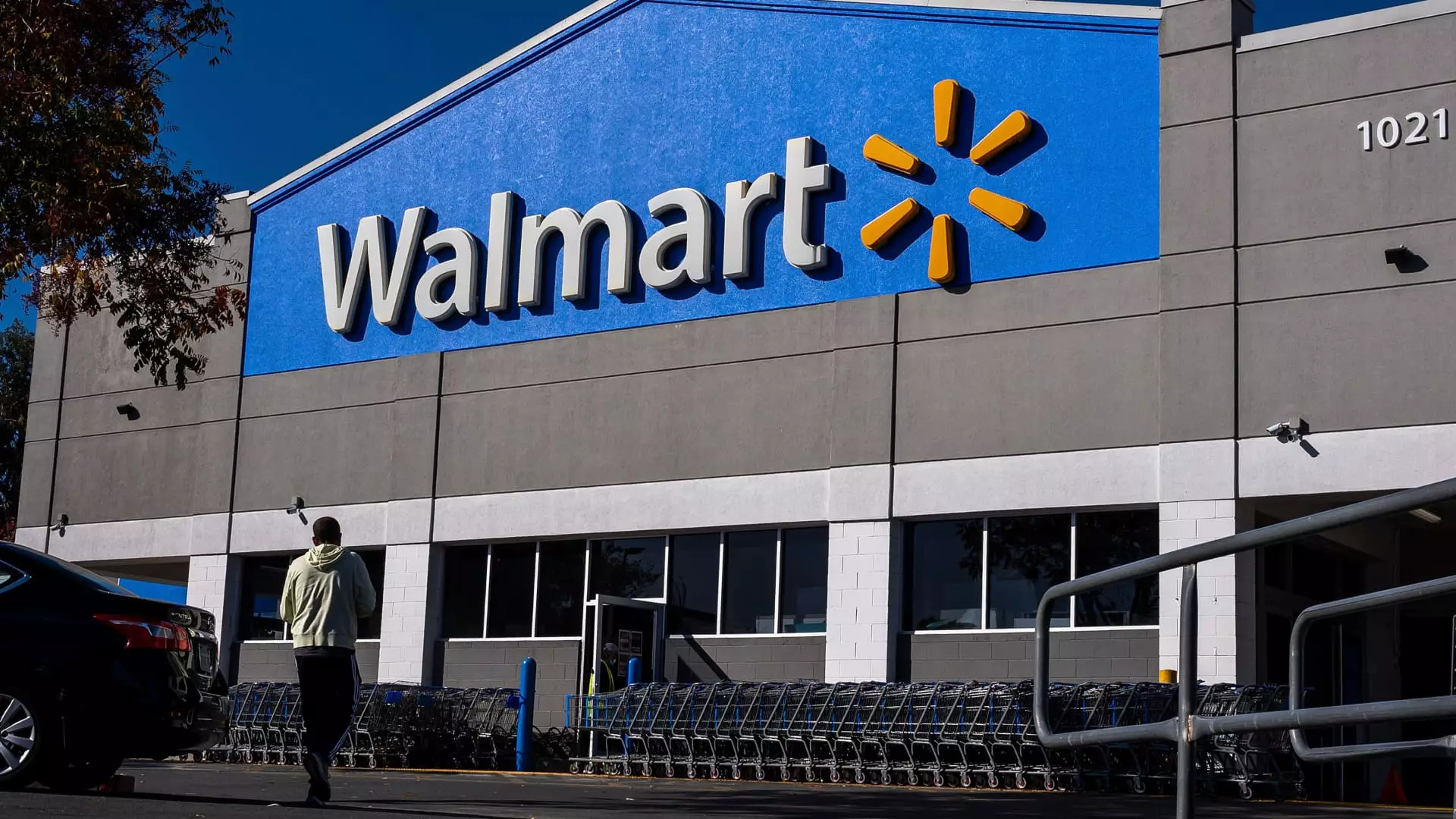As the economic climate evolves, the implications of President-elect Donald Trump’s proposed tariffs loom over the retail sector like a dark cloud. The potential for increased tariffs, ranging from 10% to a staggering 100% for goods imported from countries such as China, raises profound questions about pricing strategies and supply chain management for retailers across the United States. John David Rainey, Walmart’s Chief Financial Officer, recently articulated these concerns during an interview, emphasizing that although Walmart’s longstanding model is based on “everyday low prices,” consumers may still face price hikes on select items if these tariffs come into effect. This scenario highlights a critical intersection between governmental policies and consumer pricing, revealing an intricate web of economic forecasting, corporate strategizing, and the ultimate impact on the American household.
Rainey’s statements evoke a sense of urgency as he flagged uncertainty regarding which specific products might see price increases. This ambiguity creates tension as consumers grapple with their already strained budgets. The backdrop to these warnings is a recent uptick in retailers announcing better-than-expected earnings, juxtaposed with rising fears about the potential for inflation rearing its head again, following a period of relative moderation in the U.S. economy. The National Retail Federation’s CEO, Matthew Shay, characterizes these tariffs as a tax on American families, emphasizing that the wider consumer base could bear the brunt of these policy shifts through higher prices and potential job losses.
The ripple effect of such tariffs is not confined to major retailers like Walmart; other companies are also bracing for impact. For example, Tarang Amin, the CEO of E.l.f. Beauty, echoed similar sentiments when he noted that higher duties could force the brand to implement price increases. Such acknowledgments highlight a broader industry-wide concern: rising tariffs could not only raise costs but also require companies to reassess their entire pricing frameworks and supply chains.
In the face of these impending tariff changes, companies are reevaluating their supply chains. Rainey mentioned that Walmart has seen two-thirds of its products sourced domestically, indicating a strategic pivot to reduce reliance on foreign imports, particularly from China. This proactive approach not only mitigates the immediate financial pressures from tariffs but also showcases Walmart’s adaptability in the global supply chain landscape. Similar strategies are being implemented by other retailers; for instance, Steve Madden has indicated plans to reduce its Chinese imports by as much as 45% to buffer against the tariff’s financial consequences.
Lowe’s CFO, Brandon Sink, corroborates this trend, revealing that about 40% of the company’s costs stem from overseas goods. He acknowledged that any impending tariffs would certainly escalate product costs while assuring stakeholders of the company’s preparedness to navigate these challenges should they arise. By diversifying supply sources, these companies aim to cushion the impact on consumers while preserving their competitive edge in an unpredictable market.
The present circumstances illustrate an intricate chess game between retailers, policymakers, and consumers. Retailers must navigate a landscape defined by fluctuating tariffs and potential inflation, while consumers face the reality of rising prices for essential goods. The concept of everyday low pricing may become increasingly complicated as businesses grapple with rising costs and the need to maintain profit margins.
Moreover, the historical context of tariffs in the U.S. cannot be overlooked. Having lived under a tariff regime for several years, companies like Walmart might be more equipped to maneuver through these economic waters. However, the consensus remains clear: tariffs, while a tool for governmental policy, can create a cascading effect that not only impacts corporate strategies but also reverberates through the lives of ordinary consumers.
The potential implementation of tariffs presents both challenges and opportunities for retailers. While companies are gearing up to adapt to possible price increases and disruptions, the ultimate consequence of these tariffs on American families remains an area of significant concern, poised to reshape the financial realities of countless households. The evolving narrative within the retail landscape underscores the importance of vigilance, adaptability, and strategic foresight in an era where economic conditions can shift in an instant.


Leave a Reply